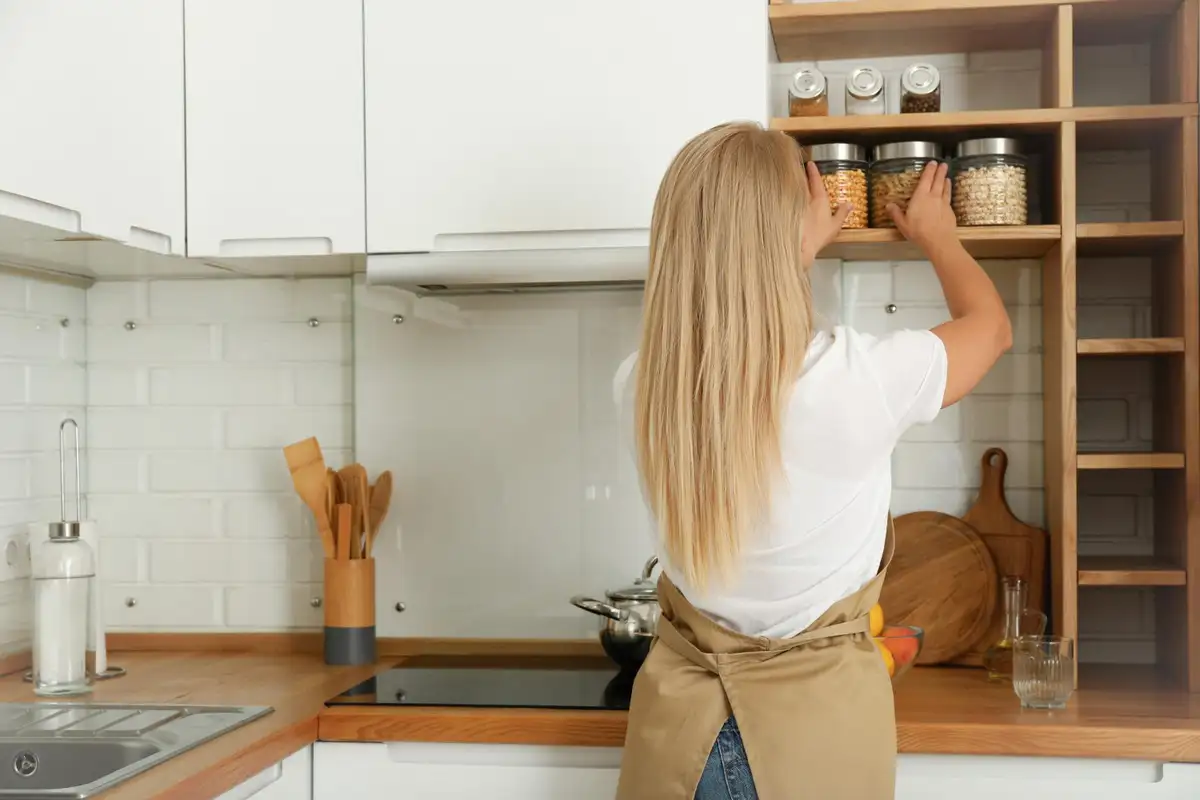
Let’s be honest. Organizing your kitchen cabinets sounds like one of those Pinterest-perfect dreams that never quite survives in real life. You stack, you label, you color-code… and three days later, the spice rack looks like a crime scene.
Here are some practical kitchen cabinet organization tips.
1. Empty Everything First — Ruthlessly
How to organize kitchen cabinets? Start by making a mess. A real, glorious, overwhelming mess. Pull out every mug, every spice jar, every tangled mess of Tupperware and mystery kitchen gadget you haven’t touched since 2016. Lay it all out on the table, the counters, maybe even the floor. This is your battlefield, and you can’t fight what you can’t see.
Because the truth is, we forget what we own. We stuff things into cabinets and corners and pretend they’re not there. Out of sight, out of mind. So bring them into the light. Hold each item in your hand and ask yourself, Do I use this? Do I even like this? If not, let it go.
2. Group by Use, Not Just Category
Kitchen cabinet organization tips isn’t just about what something is. It’s about how and when you use it. Sure, you could keep all the mugs in one cabinet, but wouldn’t it make more sense to store them near the coffee machine — alongside your beans, filters, and that one perfect teaspoon?
Think of your kitchen in zones. Your prep zone should have knives, cutting boards, and oils. Your baking station? Flour, sugar, whisks, vanilla. Organize by activity, not just alphabet. When you start thinking like this, your kitchen stops being a storage closet and starts becoming a tool.
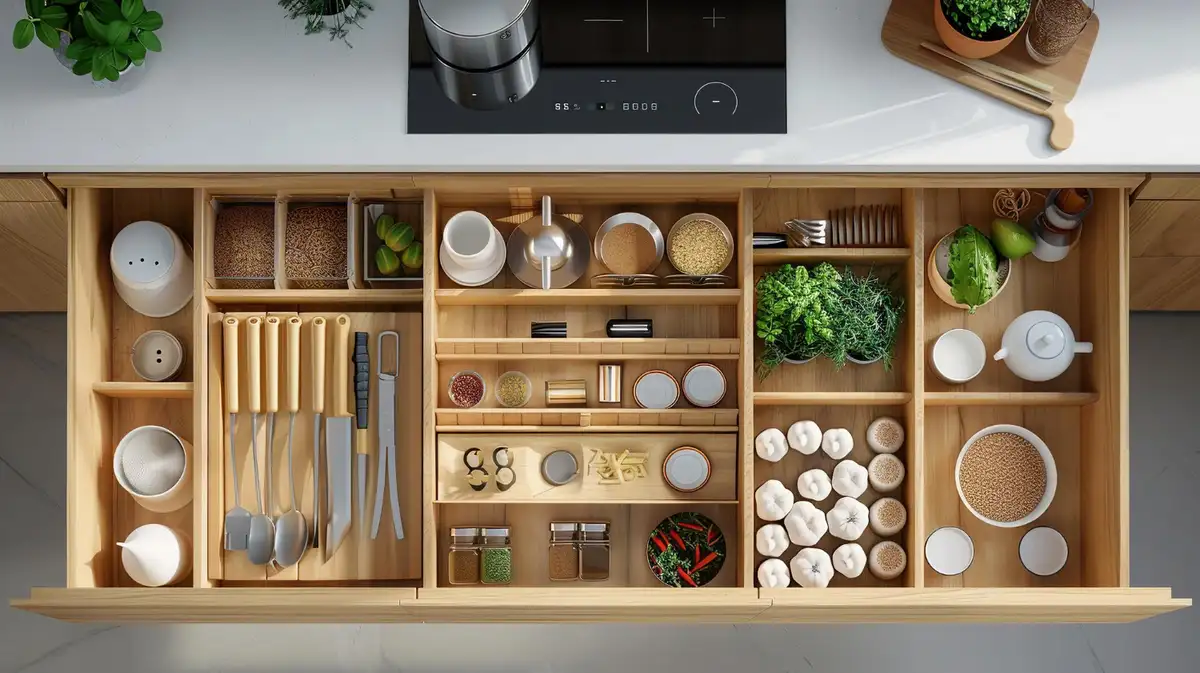
3. Declutter Ruthlessly — Yes, Again
Yes, again. Because the first round, you were still sentimental. You still thought maybe, just maybe, you’d use that panini press or the avocado slicer with the instruction manual thicker than the Constitution. But now that everything is out in the open, it’s time for the second pass. And this time, no mercy.
Get real with yourself. You don’t need five spatulas or three mismatched sets of measuring cups. You don’t need all those lids without bottoms or bottoms without lids. Keep what serves you. Let go of what clutters you.
4. Use Vertical Space
Cabinets lie. They make you think you’re out of room when you’re really just not using the space wisely. Most kitchen cabinets are tall, but we fill them like we’re stacking boxes in a moving van. Flat, layered, cramped. It’s time to go vertical.
Add risers. Get wire racks. Use shelf inserts that double your stacking power. Suddenly, instead of a leaning tower of plates or mugs playing Tetris, you’ve got neat levels, like a tidy bookshelf for your kitchen gear.
5. Invest in Clear Containers (But Not Too Many)
Clear bins are seductive. A few labeled, see-through containers can work magic. Corral your baking items into one. Store all your teas in another. Snacks? Instant oatmeal packets? Granola bars? Bin ’em. The key here is to make categories obvious. When you reach for something, your brain shouldn’t have to hunt.
This is one of the most popular kitchen cabinet organization tips. But here’s the caution. Too many bins, and you’re just creating new clutter. They become boxes inside boxes, Russian dolls of regret. Buy what you need, use what you buy, and don’t let “organizing” become an excuse to hoard in prettier packaging.
6. Prioritize Prime Real Estate
Not all kitchen cabinet space is created equal. Eye-level shelves? That’s the beachfront property. The lower ones? Decent suburbs. And the ones way up high that you can only reach with a stepladder and a prayer? That’s the wilderness. So store accordingly.
Keep your everyday essentials. The things you reach for with sleepy hands and zero brainpower, at the easiest-to-reach height. Glasses, plates, breakfast stuff. Then slowly graduate the rarely-used items upward. Fondue pot? Back row. Holiday platters? Upper deck. The goal here is to eliminate the need to go spelunking just to find a cereal bowl.
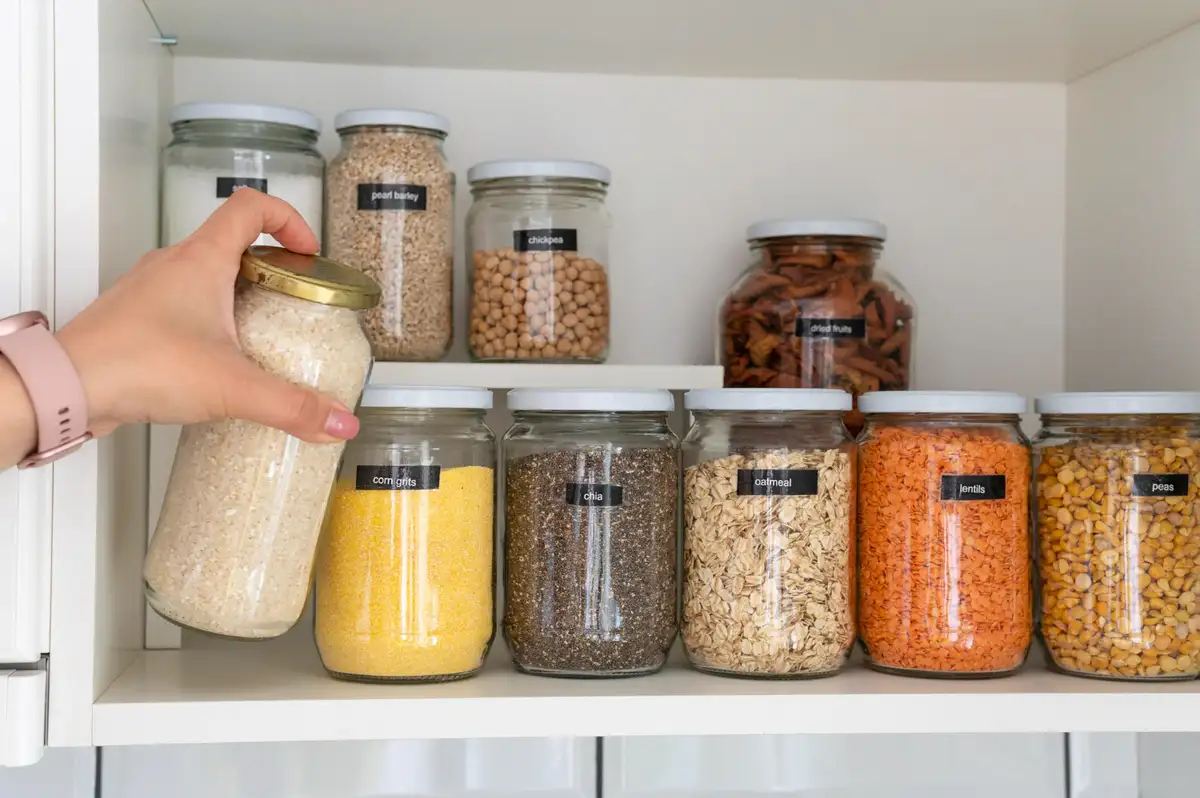
7. Label Like You Mean It
A label might seem excessive. Like, “Do I really need a tag that says ‘Rice’ when I can see the rice?” But here’s the deal: labels aren’t for your eyes. They’re for your brain. They remove the tiny friction of uncertainty. They stop the “Wait… is this flour or powdered sugar?” dance. And they work wonders for partners, kids, roommates, anyone else who uses your kitchen and isn’t telepathically linked to your organization system.
Get a label maker, or just use masking tape and a Sharpie. It’s not about perfection. It’s about clarity.
8. Corral Small Items in Bins or Baskets
Little things are the enemy of order. Tea bags, snack bars, soy sauce packets, measuring spoons… they drift, scatter, and multiply when left to their own devices. Enter bins. Small, beautiful bins. Or baskets. Or even repurposed boxes. Whatever fits your vibe.
Think of them as fences for your stuff. One bin for grab-and-go snacks. Another for daily supplements. One for all those weird baking extras like cupcake liners and food coloring. Suddenly, the clutter is contained. It’s not gone, it’s just tamed.
9. Store Lids and Containers Together (Or Suffer Forever)
This might be the most emotionally charged kitchen cabinet organization tips on the list. Because mismatched Tupperware is the stuff of nightmares. You reach for one, and it’s missing its lid. Or the lid is warped. Or it’s for a container you haven’t seen since Obama was in office.
Solve this by storing containers with their lids, always. Nested, stacked, whatever. Make it a non-negotiable rule in your kitchen. You don’t keep socks without pairs. Don’t tolerate lidless containers. Life’s too short for that kind of chaos.
10. Use the Inside of Cabinet Doors
Your cabinets have a secret life. Behind those closed doors lies bonus real estate and you’re probably not using it. But you should.
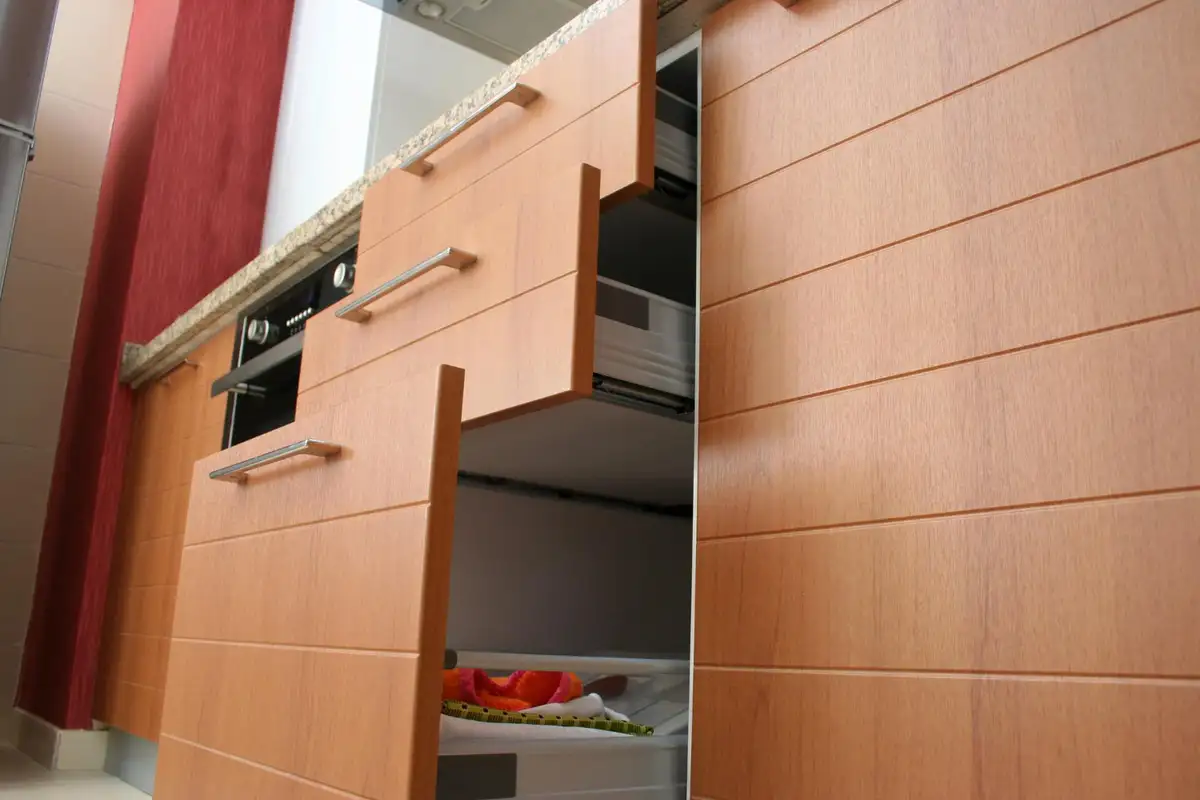
Stick-on hooks can hold measuring spoons, oven mitts, or even small tools. A mounted file holder becomes the perfect spot for storing cutting boards or foil and parchment paper. Spice racks, shallow bins, clipboards for meal plans. The inside of a cabinet door is a blank canvas. Treat it like one.
11. Rotate Like a Grocery Store
You ever pull out a can of beans and realize it expired three presidents ago? That’s what happens when your cabinets become black holes. So take a tip from the pros: rotate.
Every time you add something new to your cabinets, a box of pasta, a bag of rice, put it behind the older stuff. Push the elders to the front. First in, first out. Just like the supermarket does. This way you avoid accidental food hoarding and actually use what you buy.
12. Think “Zones” — Not Chaos
You don’t need a professional organizer. You need zones. Think of your kitchen like a tiny city, with neighborhoods based on activity.
Have a baking zone: flour, sugar, vanilla, measuring cups, all together. A coffee zone. A snack zone. A “lazy dinner night” zone with pasta, sauces, and canned shortcuts. When everything has a home, you don’t just find stuff easier, you move with flow. You become the main character in your own cooking montage.
13. Go Lazy (Susan)
Listen: turntables aren’t just for DJs and grandmas. A Lazy Susan can be the single most powerful force in your kitchen cabinet. Especially for corners or deep shelves where jars go to die.
Use one for oils and vinegars, one for sauces, or one for your ten thousand hot sauces you swear you’ll finish someday. No more knocking things over to reach the back. No more mystery bottles. Just spin and win.
14. Install Pull-Out Drawers or Sliding Trays
Among the tips on organizing kitchen cabinets, this one’s for the ambitious, or for those ready to finally stop crawling into the cabinet like a cave explorer just to reach the rice cooker.
Install pull-out drawers or sliding trays inside your lower cabinets. It’s a mini-kitchen renovation, sure, but the payoff is immense. Suddenly you’re not rummaging through the abyss. Everything’s visible. Everything’s accessible. Your back says thank you. Your future self bows in gratitude.
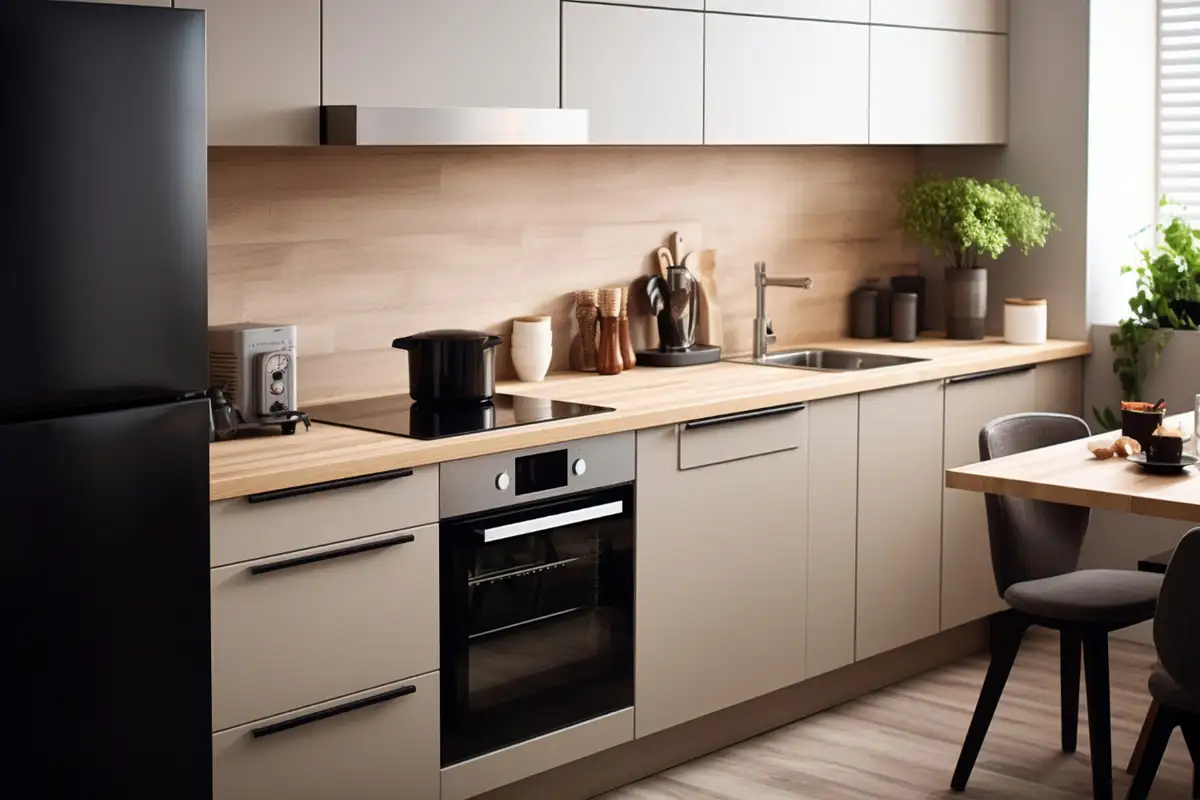
15. Give Everything a “Reset Point”
Here’s one of the golden kitchen cabinet organization tips to long-term cabinet peace: don’t just organize once. Set a reset point.
Maybe it’s every Sunday evening. Or after grocery day. Or the first of the month. Pick a small, regular time to restore order. Toss strays back in their zones, wipe the shelves, relabel if needed.
This isn’t a big, dramatic re-org. It’s a reset. A ritual. A little promise to Future You that things won’t spiral back into madness. Think of it as kitchen therapy, cheaper than a session, and oddly satisfying.
16. Store Like With Like — and Then Some
One of the most basic, yet powerful tips on organizing kitchen cabinets is this: store like with like. Sounds obvious, right? But look deeper. You’re not just grouping cans with cans, you’re curating micro-communities.
Put all your baking goods together, but go further: corral them in a single container, or even better, a dedicated bin or pull-out basket. Your pasta shouldn’t be hanging out with your pancake syrup.
17. Decant Dry Goods — For Clarity and Sanity
You ever open your cabinet and see a bunch of half-used bags of rice, flour, and quinoa, all folded and clipped like sad little paper burritos? Time to upgrade.
Buy a few quality airtight containers and decant your dry goods. Not just for the aesthetic, but for practicality. You can see how much you have. You keep pests out. You avoid waste. And honestly? It feels good. Like, weirdly good.
18. Hang Hooks Inside Cabinet Doors
One of the most underrated tips on how to organize kitchen cabinets? Don’t just think inside the box, think inside the door. That blank space on the inside of your cabinet door is valuable real estate. Hang adhesive hooks or install a mounted rail system. Use them for measuring spoons, oven mitts, even pot lids if you’re clever. It’s a tiny change that delivers outsized benefits.
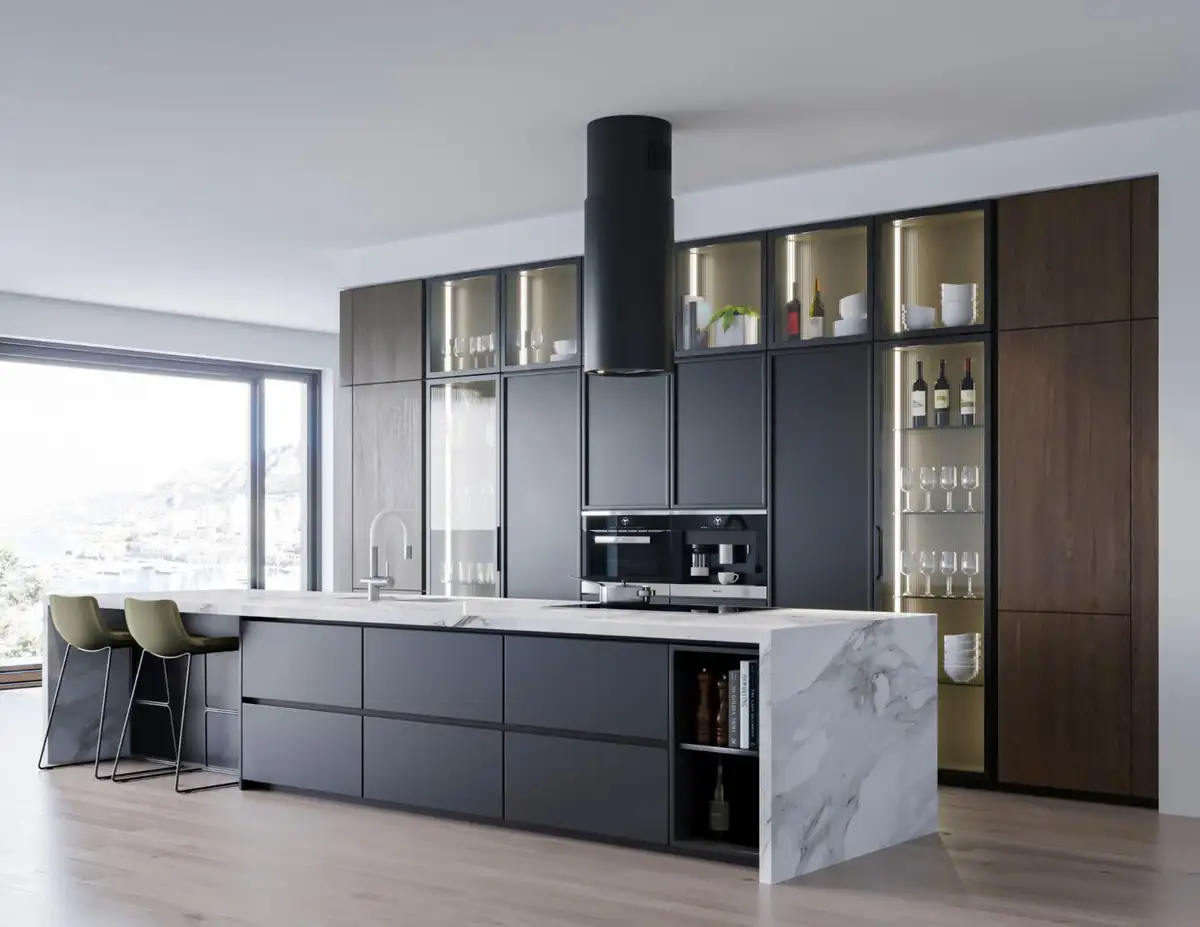
19. Put Everyday Items at Eye Level
Your kitchen should serve you, not the other way around. So stop putting the things you use daily on the top shelf like you’re punishing yourself. One of the golden rules for how to organize kitchen cabinets is this: eye level = priority.
Everyday mugs, go-to spices, the cereal you swear you’re switching to instead of toast. Keep them front and center. Reserve the top shelves for seasonal items or once-in-a-blue-moon gadgets. Lower cabinets? Great for bulk or heavier items like pots and pans. This small shift makes your kitchen feel like it finally gets you.
20. Embrace the “One-Touch” Rule
The “one-touch” rule might sound like self-help jargon, but in the kitchen, it’s gospel. Here’s the deal: when you take something out of your cabinet, you should only need one touch to do it.
If you have to lift three things to get to the blender, or move ten jars to find the peanut butter, your system is broken. Use dividers, risers, and strategic spacing to allow for easy access, no stacking towers of doom. If an item is annoying to grab, it becomes annoying to use. And then you stop using it. And then your kitchen becomes a museum of abandoned potential.
Don’t let that happen. One touch, one move, one clear path.






